Hydraulic hoses play a crucial role in various industries, enabling the transfer of hydraulic fluid to power machinery and equipment.
When it comes to hydraulic hoses, understanding their pressure ratings is essential to ensure safe and reliable operation. Two critical terms associated with hydraulic hoses are working pressure and bursting pressure.
In this article, we will delve into the difference between these hydraulic hose pressure ratings, their significance, and how they impact the selection and usage of hydraulic hoses.
Hydraulic systems rely on the proper functioning of hydraulic hoses to ensure the transmission of fluid power. The pressure rating of a hydraulic hose is a critical factor that determines its performance and suitability for a particular application. Two primary pressure ratings associated with hydraulic hoses are working pressure and bursting pressure.
What is Hydraulic Hose Working Pressure?
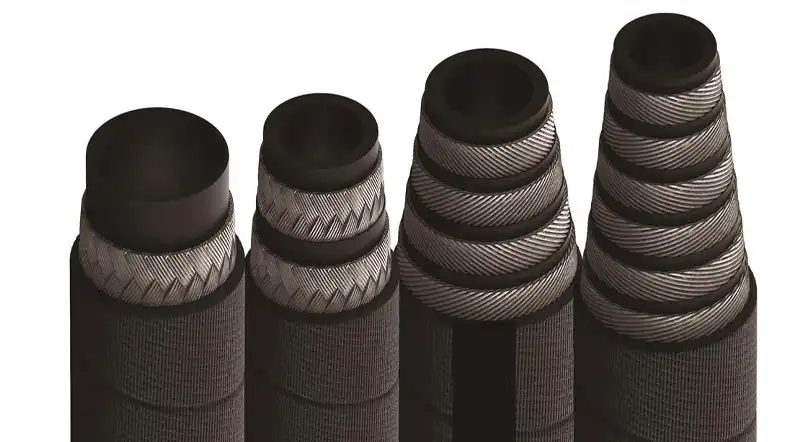
Working pressure refers to the maximum pressure that a hydraulic hose can safely handle during normal operation. It represents the continuous pressure that a hose is designed to withstand without experiencing any significant deformation or failure. Working pressure is typically expressed in pounds per square inch (psi) or bar.
The Importance of Working Pressure
The working pressure rating is crucial because it ensures the hydraulic hose can handle the pressure exerted by the hydraulic system without any compromise in performance or safety. Operating a hydraulic hose beyond its working pressure can lead to hose failure, leaks, or even catastrophic accidents. Therefore, it is vital to select a hose with a working pressure rating that exceeds the maximum pressure expected in the application.
Factors Affecting Working Pressure
Several factors influence the working pressure of a hydraulic hose. These include the hose’s construction, materials used, reinforcement type, and temperature capabilities. It is essential to consider these factors when selecting a hydraulic hose to ensure it can withstand the working pressure requirements of the system.
Hydraulic Hose Bursting Pressure
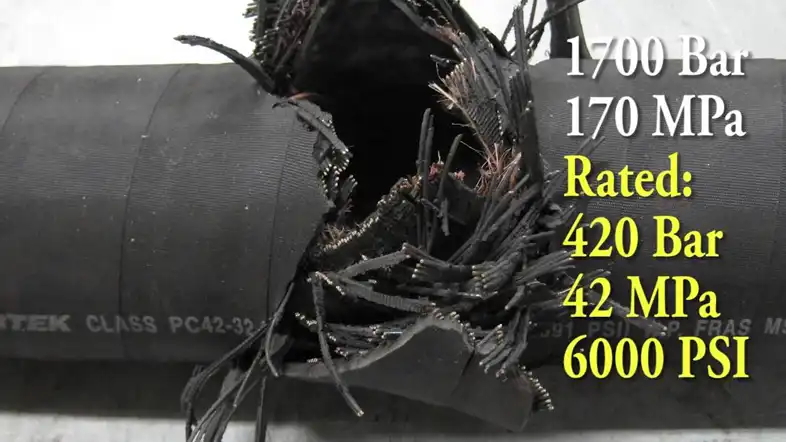
Bursting pressure refers to the maximum pressure that a hydraulic hose can withstand before rupturing or bursting. Unlike working pressure, bursting pressure represents a short-term peak pressure that a hose can endure without catastrophic failure. Similar to working pressure, bursting pressure is also expressed in psi or bar.
Significance of Bursting Pressure
While working pressure indicates the maximum pressure a hydraulic hose can handle during normal operation, bursting pressure serves as a safety margin. It provides an extra level of protection against unexpected pressure spikes or system malfunctions. A hydraulic hose with a high bursting pressure can tolerate sudden pressure increases without failure.
Factors Influencing Bursting Pressure
Various factors affect the bursting pressure of a hydraulic hose. These include the hose’s construction, reinforcement layers, wall thickness, and the quality of materials used. It is important to note that exceeding the bursting pressure can result in hose failure, causing potential harm to personnel and equipment.
Working Pressure vs. Bursting Pressure: Key Differences
| Pressure Rating | Working Pressure | Bursting Pressure |
|---|---|---|
| Definition | The maximum pressure that a hydraulic hose is designed to safely handle during normal operation. | The pressure at which a hydraulic hose may rupture or burst due to excessive pressure or failure of the hose assembly. |
| Measurement Unit | The difference between the working pressure and the bursting pressure, ensures the hose operates within safe limits. | PSI (Pounds per Square Inch) or bar (1 bar = 14.5 PSI) |
| Magnitude | Usually a fraction or a percentage of the bursting pressure. It is typically lower than the bursting pressure. | The highest pressure value that a hydraulic hose can withstand before it fails catastrophically. It is significantly higher than the working pressure. |
| Safety Margin | The difference between the working pressure and the bursting pressure, ensuring the hose operates within safe limits. | No safety margin is included since the bursting pressure is the maximum pressure a hose can handle before failure. |
| Application | The pressure at which a hydraulic system operates under normal conditions. | A safeguard against sudden pressure spikes, system malfunctions, or excessive pressure due to blockages, which can cause a hose to burst. |
| Importance | Critical to consider ensuring proper hose selection and avoid premature failure. | Primarily used as a safety factor to provide a buffer against potential failure under extreme conditions. |
The primary difference between working pressure and bursting pressure lies in their duration and purpose. Working pressure represents the continuous pressure a hydraulic hose can handle during normal operation while bursting pressure indicates the short-term peak pressure a hose can withstand without failure. It is crucial to choose a hydraulic hose with a working pressure rating higher than the maximum expected pressure and ensure the bursting pressure provides an additional safety margin.
Safety Considerations
Maintaining safety in hydraulic systems requires adherence to the working pressure and bursting pressure ratings of hydraulic hoses. Operating a hydraulic system beyond these pressure limits can lead to catastrophic failures, causing property damage, injuries, or even loss of life. It is imperative to follow manufacturer guidelines, perform regular inspections, and replace hoses that have exceeded their pressure ratings or show signs of wear and tear.
Selecting the Right Hydraulic Hose
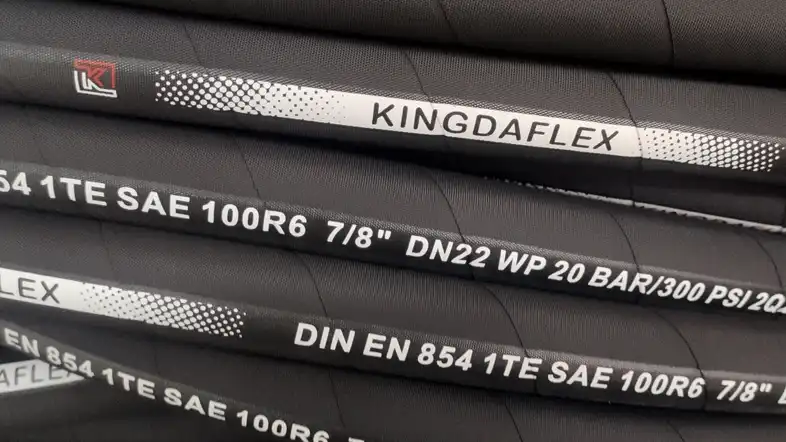
To ensure the proper functioning of hydraulic systems, selecting the right hydraulic hose is crucial. Factors to consider include the working pressure requirements, application conditions, temperature range, compatibility with fluids, and environmental considerations.
Consulting with a knowledgeable hydraulic specialist or referring to manufacturer specifications can help in making the appropriate hose selection.
Proper Maintenance and Inspection
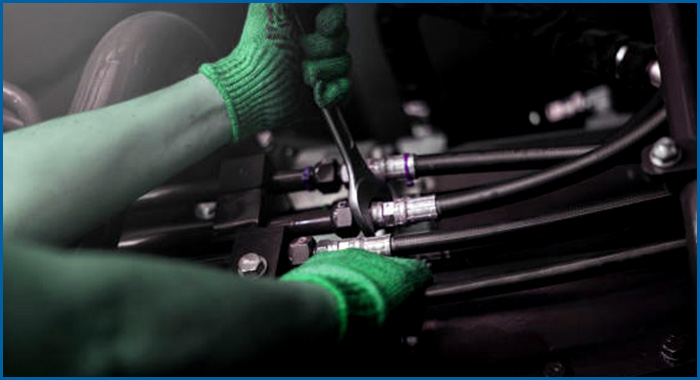
Regular hydraulic hose maintenance and inspection of hydraulic hoses are vital to identify any signs of wear, damage, or degradation. Hoses should be visually inspected for cracks, leaks, bulges, or any other visible abnormalities.
Performing pressure tests and considering the service life of hoses can help prevent unexpected failures and ensure the safe operation of hydraulic systems.
Understanding the difference between working pressure and bursting pressure is crucial for selecting and using hydraulic hoses in various applications.
Working pressure represents the continuous pressure a hose can handle during normal operation while bursting pressure serves as a safety margin against pressure spikes. By considering these pressure ratings and following safety guidelines, it is possible to ensure the reliable and safe operation of hydraulic systems.
Hydraulic Hose Dynamic Pressure vs Static Pressure
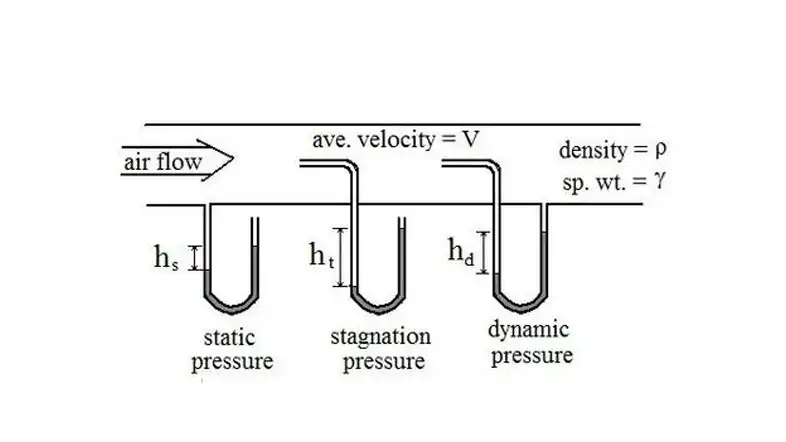
Hydraulic hoses are essential components used in hydraulic systems to transmit fluid power. They are designed to withstand high pressures and carry fluid between hydraulic components. When discussing hydraulic hose pressure, two important concepts to understand are dynamic pressure and static pressure.
Dynamic Pressure:
Dynamic pressure refers to the pressure exerted by a fluid when it is in motion. In the context of hydraulic hoses, dynamic pressure occurs when the hydraulic system is operational, and fluid is flowing through the hose. Dynamic pressure is typically higher than static pressure due to the added energy of fluid movement. It is influenced by factors such as flow rate, fluid viscosity, hose diameter, and system design.
Static Pressure:
Static pressure, on the other hand, refers to the pressure exerted by a fluid when it is at rest or not in motion. In the case of hydraulic hoses, static pressure exists when the hydraulic system is at rest or when fluid flow is blocked. Static pressure is typically lower than dynamic pressure because there is no additional energy from fluid movement. It is influenced by factors such as system design, fluid properties, and the weight of the fluid column above the point of measurement.
Both dynamic pressure and static pressure are important considerations when selecting hydraulic hoses for a specific application. Hoses need to be designed and rated to withstand the maximum pressures experienced during both dynamic and static conditions. The pressure rating of a hydraulic hose specifies the maximum pressure it can safely handle, taking into account both dynamic and static pressure situations.
It’s crucial to ensure that the selected hydraulic hose has a pressure rating that exceeds the maximum dynamic and static pressures expected in the hydraulic system. Operating a hose beyond its pressure rating can lead to hose failure, leaks, or other safety hazards.
Hydraulic Hose Maximum Pressure
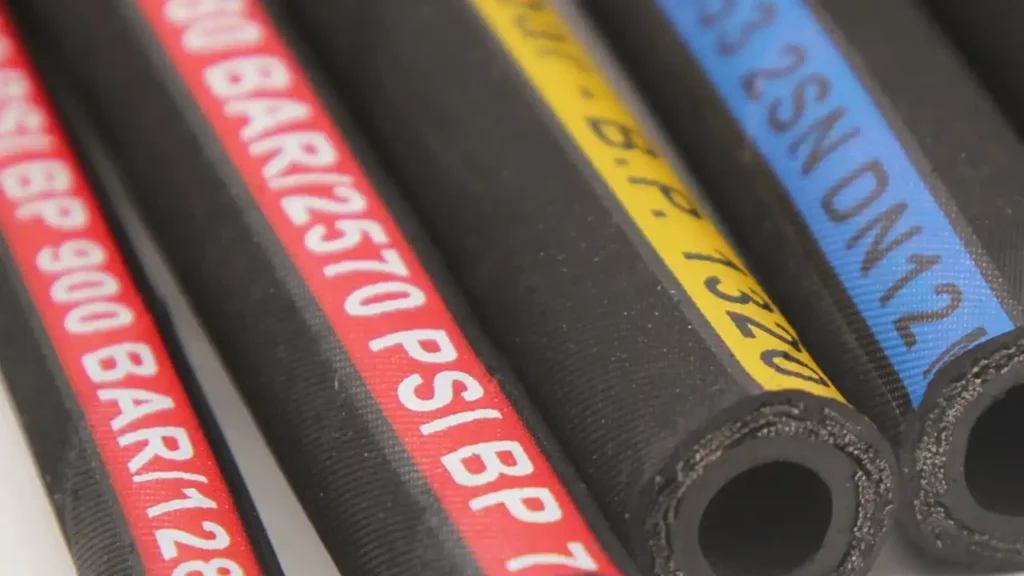
Hydraulic hose maximum pressure is a vital specification that determines the maximum operating pressure a hose can withstand without failing. Exceeding this pressure limit can lead to catastrophic consequences, such as leaks, ruptures, and equipment damage.
Factors Affecting Maximum Pressure:
- Hose Construction: The materials used in the hose’s construction, including the rubber core, reinforcement layers, and outer cover, significantly influence its pressure rating.
- Reinforcement Type: The type and quality of reinforcement within the hose, such as steel wire or braided fabric, determine its strength and ability to withstand high pressure.
- Hose Diameter: The diameter of the hose also affects its pressure rating. Larger diameter hoses generally have higher pressure ratings.
- Operating Temperature: The temperature at which the hose operates can influence its pressure capacity. Higher temperatures can reduce the strength of the hose material.
- Fluid Type: The type of hydraulic fluid being used can also impact the hose’s pressure rating. Some fluids may be more corrosive or abrasive than others.
Importance of Adhering to Maximum Pressure Ratings:
- Preventing Failures: Operating a hydraulic hose above its maximum pressure rating can lead to premature wear, leaks, or even catastrophic ruptures.
- Ensuring Safety: Exceeding the pressure limit can pose a serious safety hazard, potentially causing injuries or property damage.
- Protecting Equipment: Hydraulic system failures can result in costly equipment damage and downtime.
- Maintaining Efficiency: Proper hydraulic hose maintenance and adherence to pressure limits can help ensure optimal system performance and efficiency.
When selecting hydraulic hoses, it is essential to carefully consider the maximum pressure requirements of your application and choose hoses that are rated to handle the expected pressures.
Would you like to know more about specific types of hydraulic hoses or how to select the right hose for your application?
FAQs
What is the difference between working pressure and bursting pressure?
Working pressure refers to the continuous pressure a hydraulic hose can handle during normal operation while bursting pressure indicates the short-term peak pressure a hose can withstand without failure.
Why is working pressure important for hydraulic hoses?
Working pressure ensures that a hydraulic hose can handle the pressure exerted by the system without compromising safety or performance.
What factors affect the bursting pressure of hydraulic hoses?
The construction, reinforcement layers, wall thickness, and materials used in the hose influence its bursting pressure.
Can I exceed the working pressure of a hydraulic hose?
Exceeding the working pressure of a hydraulic hose can lead to hose failure, leaks, or accidents. It is essential to select a hose with a suitable working pressure rating.
How can I select the right hydraulic hose for my application?
Consider factors such as working pressure requirements, application conditions, temperature range, fluid compatibility, and environmental considerations when selecting a hydraulic hose.
What happens if I exceed the working pressure of a hydraulic hose?
Exceeding the working pressure of a hydraulic hose can result in hose failure, leaks, or even accidents. It is essential to select a hose with a working pressure rating that exceeds the expected pressure in the application.
Can I use a hydraulic hose with a lower bursting pressure?
It is not recommended to use a hydraulic hose with a lower bursting pressure than the maximum pressure expected in the system. The bursting pressure serves as a safety margin against pressure spikes and unexpected events.
How often should hydraulic hoses be inspected?
Hydraulic hoses should be visually inspected regularly for signs of wear, damage, or degradation. The frequency of inspection may vary depending on the operating conditions and application.
Can I repair a damaged hydraulic hose?
It is generally recommended to replace a damaged hydraulic hose rather than attempt repairs. Proper installation of new hoses ensures optimal performance and safety.
Conclusion

